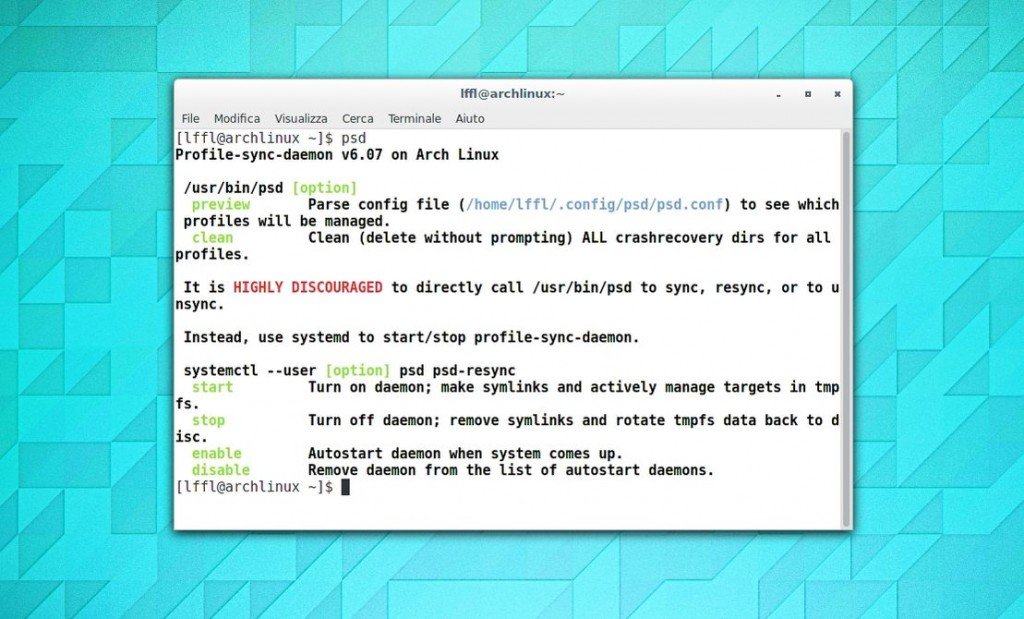

- #LINUX DAEMON SYNC SOFTWARE#
- #LINUX DAEMON SYNC CODE#
- #LINUX DAEMON SYNC PASSWORD#
- #LINUX DAEMON SYNC DOWNLOAD#
As the ladder is my favourite because of it’s ease of updating, I’ll explain it in short.įirst you need git.
#LINUX DAEMON SYNC DOWNLOAD#
You can either download a zip-file of the program and extract it, or you can clone the git repository. you can finetune the type of events watcher should listen to, i.e.you can trigger multiple commands at once (i.e.

If there is a change in a monitored directory, watcher can trigger custom shell commands defined for that event. Watcher.py is a daemon written in python, that monitors selectable files and/or whole folders for changes. Monitoring files and folders for changes with watcher.py If the connection is made without requesting your password, you’re ready for the next step. Now connect to the remote machine by entering
#LINUX DAEMON SYNC PASSWORD#
Ssh-copy-id -i ~/.ssh/id\_rsa.pub that's the last time you have to enter your password # copy your fresh key to the remote machine: # hit 3 times enter to use default values So you have to use a public ssh key to grant proper identification of your machine. In order to upload files and directories from your local machine to a remote machine, you must be able to connect to that remote machine without being asked for a password during the connection attempt. Requirement: ssh connection without password In this article I’ll show you how you can combine these two tools to get a powerful auto synchronization setup in less than 5 minutes. And we have people like Gregg Hernandez, who create nifty little tools like watcher. To immediately scale down your expectations: there is no linux GUI equivalent of WinSCP that has its built-in auto sync feature. On Windows, there is a program called WinSCP, a FTP client, that gets rid of this time consuming practice by offering an autosynchronization function for a specific folder after saving/modifying a file in this folder. You do this hundred times a day, thousand times a week. You change a file, save it, and then you have to upload the changed file to the matching folder on your test web server in your favourite ftp program, i.e. In short, /usr/sbin and /usr/bin are most likely correct.If you are a webdeveloper using linux, you probably know this exhausting procedure: It's not uncommon for binaries to be thought of as libraries

#LINUX DAEMON SYNC CODE#
But this generally shouldn't be used if you are going to distribute your code to other people. If you don't intend to package it properly and just want to manually copy it as a sys admin then /usr/local/bin and /usr/local/sbin are more appropriate.dpkg or similar) then definitely use /usr/bin and /usr/sbin.
#LINUX DAEMON SYNC SOFTWARE#
If you are properly packaging your software (into a. Most things on unbuntu live here although there are exceptions. Reserve these for binaries required to boot your system. Some people say sbin is for binaries executed only by root. Generally bin is for user commands, sbin is for server daemons. These are tricky there's a whole bunch of places they can exist. Again a single config file doesn't need a directory but it doesn't hurt. Don't forget to add an /etc/logrotate.d entry as well Although a single log doesn't actually need a directory. run is the newer standard place for such things. That's because /var/run is just a sym-link to /run these days on Ubuntu. There are many fine resources on the standards, including


 0 kommentar(er)
0 kommentar(er)
